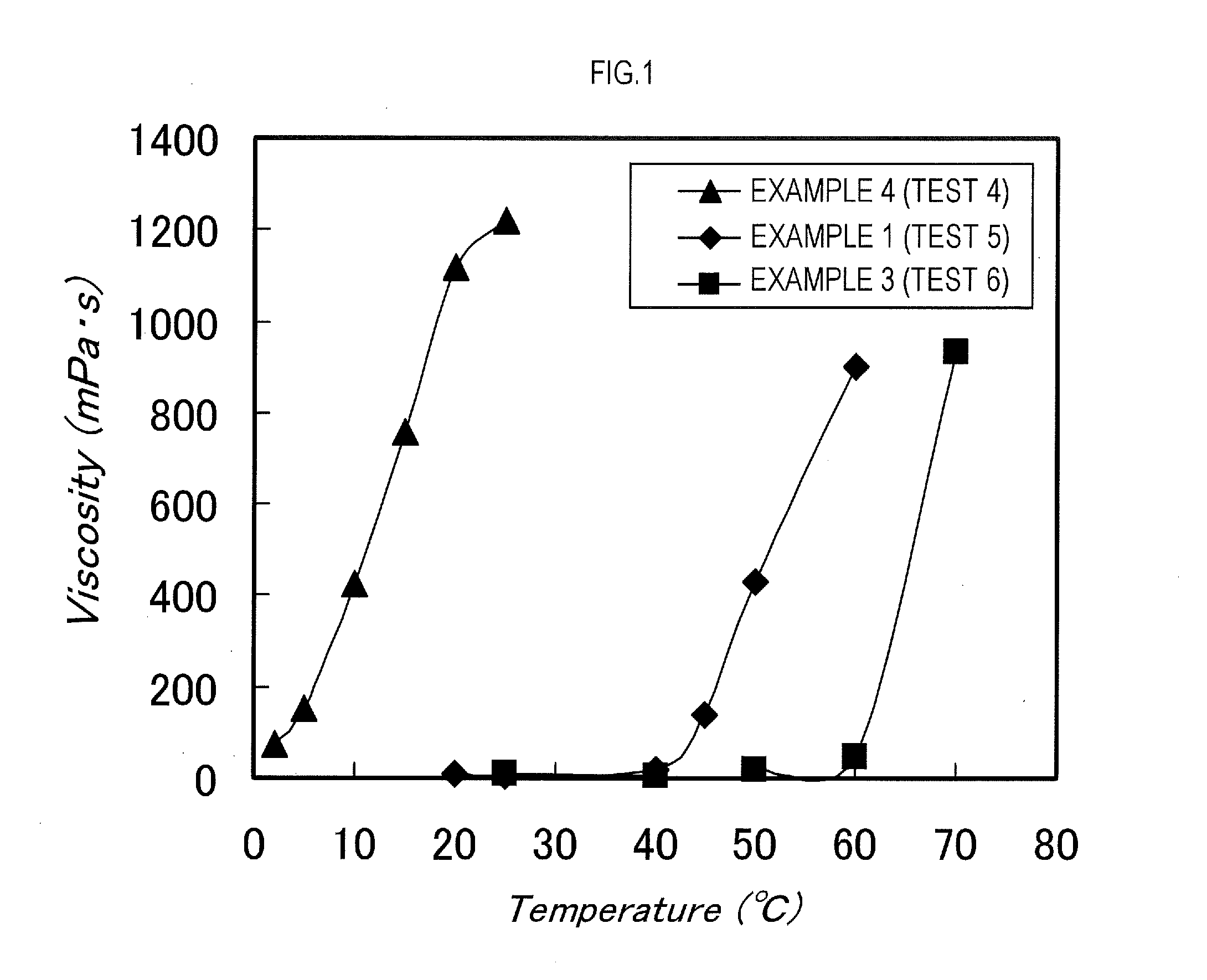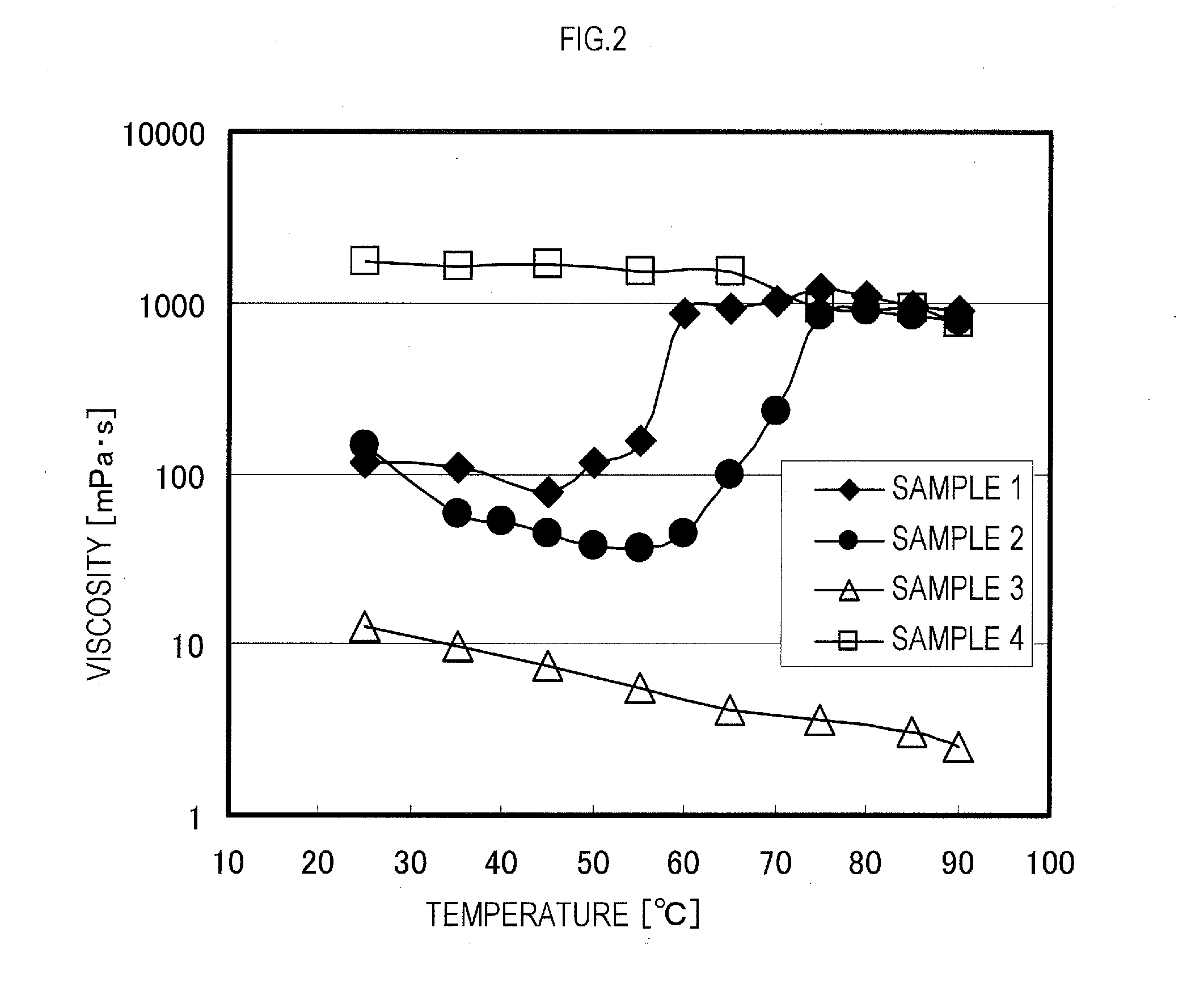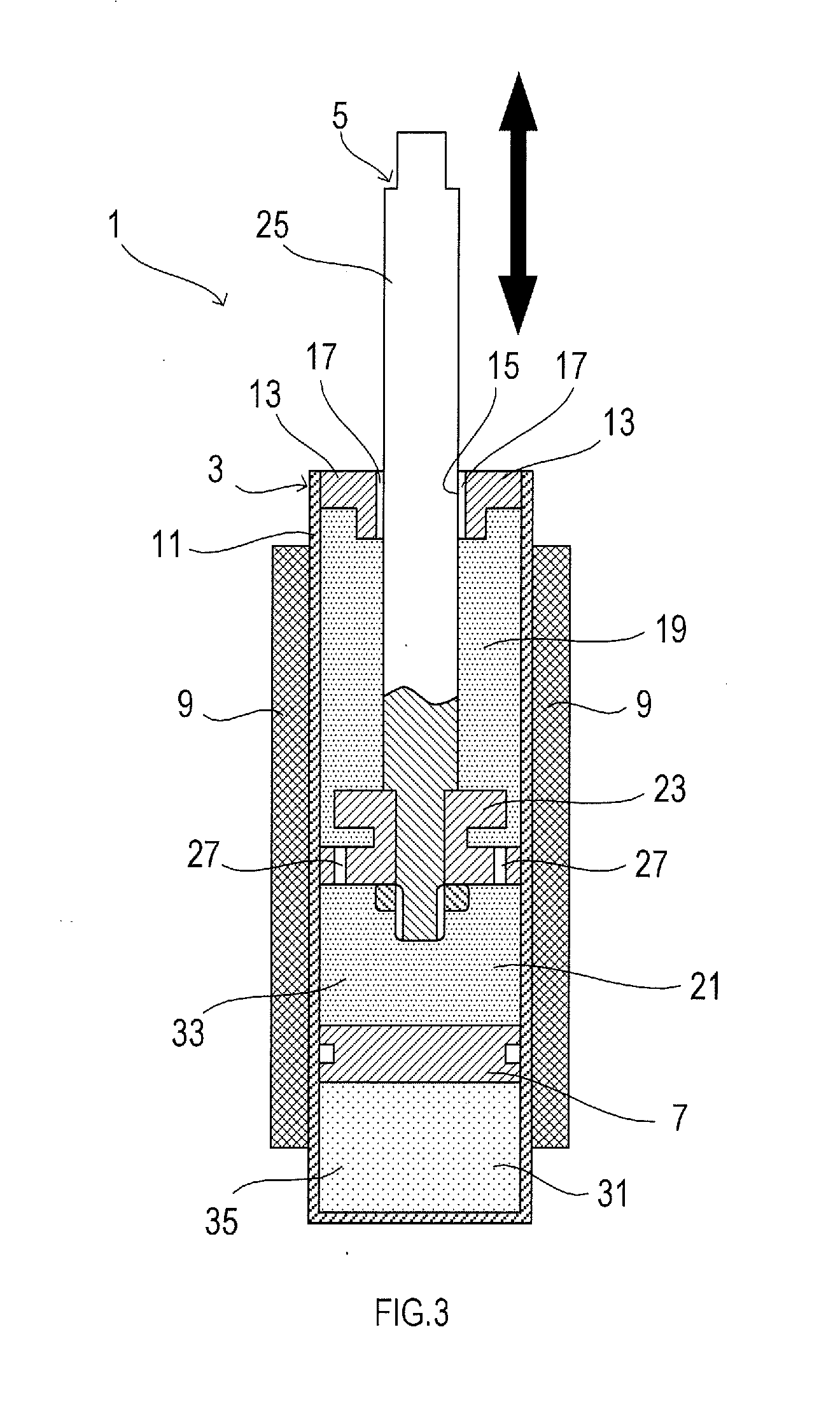Dispersant, dispersion, method for adjusting viscosity of dispersant, mobile device, surface treatment agent, electrolytic solution, separator, and rechargeable lithium ion battery
a technology for dispersant and viscosity, which is applied in the direction of electrolysis solution, transportation and packaging, and sports equipment, etc., can solve the problems of sharp increase in viscosity of dispersant, difficulty in using dispersant in some cases, and difficulty in handling dispersant, so as to reduce the viscosity of dispersant and reduce the viscosity , the effect of saving energy
- Summary
- Abstract
- Description
- Claims
- Application Information
AI Technical Summary
Benefits of technology
Problems solved by technology
Method used
Image
Examples
example 1
[0150]2-methyl-2-[N-(t-butyl)-N-(diethoxyphosphonyl-2-2-dimethylpropyl)aminoxy]propionic acid (abbreviated to SG-1-MA, 3.81 g, 10.0 mmol), stearyl acrylate (50.0 g, 151.7 mmol), and n-butyl acetate (12.5 g) were put into a reaction vessel, followed by N2 bubbling for 20 minutes. After that, the reaction was conducted by continuing the N2 bubbling and maintaining a temperature of the reaction liquid to 118° C. Four hours later, normal butyl acrylate (50.0 g, 390 1 mmol) subjected to a N2 bubbling treatment for 20 minutes and n-butyl acetate (12.5 g) were added to the reaction vessel, and the reaction was continued at 118° C. The reaction was terminated 5 hours after the addition of normal butyl acrylate to obtain a block copolymer (dispersant). A weight average molecular weight of the block copolymer was Mw=11,800.
[0151]The stearyl acrylate is one example of the first monomer of the present invention, and the normal butyl acrylate is one example of the second monomer of the present i...
example 2
[0153]SG-1-MA (3.81 g, 10.0 mmol), stearyl acrylate (50.0 g, 151.7 mmol), and n-butyl acetate (12.5 g) were put into a reaction vessel, followed by N2 bubbling for 20 minutes. After that, the reaction was conducted by continuing the N2 bubbling and maintaining a temperature of the reaction liquid to 118° C. Four hours later, benzyl acrylate (50.0 g, 308.2 mmol) subjected to a N2 bubbling treatment for 20 minutes and n-butyl acetate (12.5 g) were added to the reaction vessel, and the reaction was continued at 118° C. The reaction was terminated 5 hours after the addition of benzyl acrylate to obtain a block copolymer (dispersant). A weight average molecular weight of the block copolymer was Mw=12,600.
[0154]The stearyl acrylate is one example of the first monomer of the present invention, and the benzyl acrylate is one example of the second monomer of the present invention.
example 3
[0155]SG-1-MA (3.81 g, 10.0 mmol), behenyl acrylate (50.0 g, 131.0 mmol), and n-butyl acetate (12.5 g) were put into a reaction vessel, followed by N2 bubbling for 20 minutes. After that, the reaction was conducted by continuing the N2 bubbling and maintaining a temperature of the reaction liquid to 118° C. Four hours later, normal butyl acrylate (50.0 g, 390.1 mmol) subjected to a N2 bubbling treatment for 20 minutes and n-butyl acetate (12.5 g) were added to the reaction vessel, and the reaction was continued at 118° C. The reaction was terminated 5 hours after the addition of normal butyl acrylate to obtain a block copolymer (dispersant). A weight average molecular weight of the block copolymer was Mw=12500.
[0156]The behenyl acrylate is one example of the first monomer of the present invention, and the normal butyl acrylate is one example of the second monomer of the present invention.
PUM
| Property | Measurement | Unit |
|---|---|---|
| Temperature | aaaaa | aaaaa |
| Temperature | aaaaa | aaaaa |
| Temperature | aaaaa | aaaaa |
Abstract
Description
Claims
Application Information
 Login to View More
Login to View More - R&D
- Intellectual Property
- Life Sciences
- Materials
- Tech Scout
- Unparalleled Data Quality
- Higher Quality Content
- 60% Fewer Hallucinations
Browse by: Latest US Patents, China's latest patents, Technical Efficacy Thesaurus, Application Domain, Technology Topic, Popular Technical Reports.
© 2025 PatSnap. All rights reserved.Legal|Privacy policy|Modern Slavery Act Transparency Statement|Sitemap|About US| Contact US: help@patsnap.com



